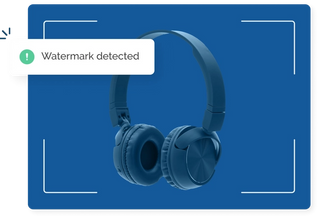Security
Digital Rights Management Explained

Nuala Cronin
Content Manager
4 min read

In today's digital age it is crucial for organizations to understand the importance of digital rights management (DRM).
Content creation and distribution have become more important and far reaching than ever while content management is becoming more and more difficult to control. To top it off, copyright infringement has increased exponentially.
So, as an organization with terabytes worth of digital assets, and an asset library that is guaranteed to grow, how can you protect your brand and your brand assets?
Even if you catch the individual or entity that has stolen your digital property, engaging in a lawsuit will probably cost you hundreds of thousands of dollars, so what is the best course of action?
Preemptive protection or digital rights management.
Digital rights management can significantly protect digital property, and a dedicated digital asset management (DAM) system can massively support rights management initiatives.
But let's delve into it in detail. This blog post will cover:
- What is Digital Rights Management?
- Who Needs to Understand Digital Rights Management?, and
- How Does a DAM Help Support Digital Rights Management?
What is Digital Rights Management and Why is it Necessary?
Digital rights management refers to the legal access, licensing, and copyrights of digital assets. The scope of DRM can protect organizations and stakeholders from asset misuse through access control and usage restrictions, licensingand expirationdates,
It’s important to uphold digital rights management across entire organizations but there are three main stakeholders that carry the responsibility. Digital Asset Managers, Marketing teams, and Creative teams need to have a clear understanding of how DRM impacts their work, and in turn protects the organization’s brand.
Who Needs to Understand Digital Rights Management?
Digital Asset Managers:
Digital asset managers oversee, implement and maintain the DAM. Responsibilities of a digital asset manager include acquiring, organizing and cataloguing digital assets. They also oversee the security of digital assets, enforce DAM best practices.
By implementing DRM measures, digital asset managers can control access to their valuable content, preventing unauthorized individuals from reproducing, distributing, or profiting from their creative works without permission.
DRM is instrumental in safeguarding intellectual property. It provides robust protection against unauthorized use, piracy, and plagiarism of digital assets.
Marketers:
When it comes to marketing teams, DRM practices can help to effectively safeguard brand integrity by preventing unauthorized use of logos, images, and other brand assets. can effectively protect brand assets, ensure secure distribution of digital marketing materials, and gain actionable insights through metrics and analytics.
Following digital rights management procedures enables marketing teams to have strict control over the distribution and usage of their valuable assets, reducing the risk of unauthorized use and ultimately, protecting the brand's visual identity.
Creative Professionals:
Creative professionals need to understand that effective digital rights management helps to deter unauthorized use of creative works by clearly indicating ownership, copyright information, plagiarism protection and usage rights.
By incorporating DRM, creatives can assert ownership over their brand assets, ensuring that their rights are clearly defined and legally protected. This protection not only deters unauthorized use and distribution but also facilitates the secure sharing of their work, allowing for collaboration without compromising control.
How Does a DAM Help Support Digital Rights Management?
Digital asset management systems like MediaValet are an integral tool in supporting digital rights management (DRM) efforts. It provides a centralized repository for storing and organizing assets, making it easier to track ownership and usage rights.
By implementing a DAM, organizations can effectively manage, protect, and control their digital assets and facilitate DRM through watermarking, metadata management, and access controls.
Digital Asset Managers:
Asset managers can use custom permission settings to define and enforce specific permissions for different user groups, ensuring that only authorized individuals can access, modify, or distribute digital assets. This level of control helps maintain the integrity and exclusivity of their content, reducing the risk of unauthorized or inappropriate use.
They can use DAM reporting and audit logs to efficiently track and monitor digital asset usage. This feature is particularly valuable in ensuring compliance with licensing agreements. Audit logs can provide insights into how, when, and by whom the content is being utilized.
By leveraging DAM, digital asset managers can enforce licensing terms, monitor usage restrictions, and identify any potential violations or misuse of their assets to maximize the value and profitability of their digital assets while ensuring compliance with licensing agreements.

Marketers:

A digital asset management solution plays a critical role in secure content distribution for digital marketing materials. Clear labelling of assets with metadata and the application of expiration dates can provide a secure framework for content distribution. It can prevent unauthorized sharing, duplication, or modification of the digital marketing assets, thereby preserving campaign effectiveness and maintaining the desired message consistency across various channels.
DAM systems also offer valuable metrics and analytics capabilities that provide insights into content performance and audience engagement.
These systems can track and monitor the usage of digital marketing assets, enabling marketers to gather data on how their content is being consumed, shared, and engaged with by the target audience. This information allows for data-driven decision-making, helping to optimize marketing strategies, identify successful campaigns, and refine future content creation efforts.
Creative Professionals:
Forensic watermarking can help deter unauthorized use of creative works by clearly indicating ownership. Visible and invisible watermarks help deter unauthorized use of creative works by clearly indicating ownership. Metadata, such as copyright information and usage rights, embedded within digital assets, assists in tracking and establishing ownership, providing evidence of authorship and protecting against plagiarism.
Licensing agreements should clearly define how their works can be used, ensuring that their intellectual property is not exploited without proper consent.

A DAM system can enforce licensing terms, track usage permissions, and facilitate secure distribution, protecting the creative professional's rights and ensuring compliance with licensing agreements.
A digital asset management solution can also enable secure collaboration by providing granular access controls, allowing creative professionals to share assets with clients, colleagues, and stakeholders while ensuring that permissions are strictly adhered to. This ensures that sensitive or unfinished work is protected and shared only with authorized individuals, mitigating the risk of unauthorized use or premature release of creative assets.
Digital Rights Management is a critical aspect of modern content management, enabling digital asset managers, marketers, and creative professionals to protect their valuable intellectual property and maintain control over its distribution and usage.
By implementing a digital asset management system like MediaValet organizations can safeguard their digital assets, ensure compliance and protect their brand as they continue to grow.
Related articles

